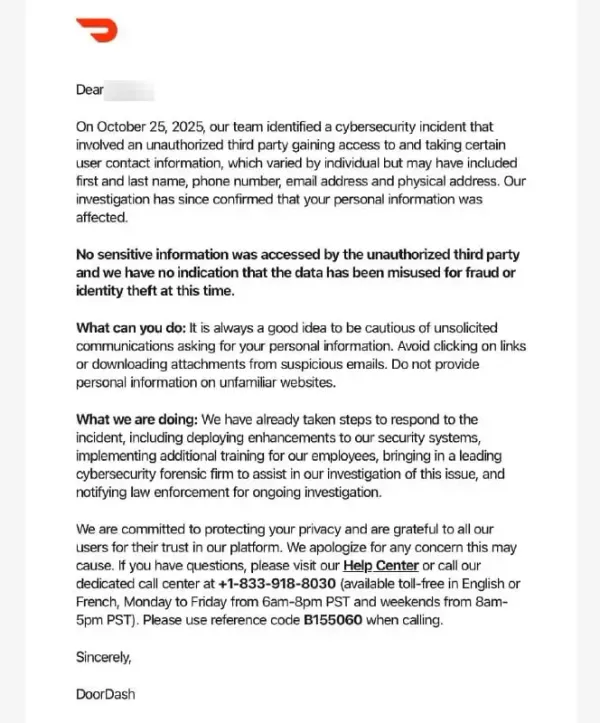The Silent Revolution: How China's Ministry of State Security Became the World's Most Formidable Cyber Power

Executive Summary
In the shadow of the digital age, a quiet transformation has been unfolding within China's intelligence apparatus. The Ministry of State Security (MSS), once primarily concerned with tracking dissidents and internal security, has emerged as arguably the world's most sophisticated and dangerous cyber espionage agency. Recent revelations about the Salt Typhoon campaign—which compromised at least nine U.S. telecommunications companies and affected dozens of countries—represent just the tip of an iceberg that threatens to reshape global cybersecurity and the balance of power in the digital domain.
The Transformation Under Xi Jinping
The story of the MSS's rise to cyber dominance begins in 2012 when Xi Jinping assumed power as China's leader. Deeply unsettled by Edward Snowden's 2013 revelations about U.S. surveillance capabilities, Xi initiated a sweeping reorganization of China's intelligence services. The ministry, founded in 1983 primarily as a domestic security agency, underwent a dramatic transformation that would position it at the center of China's global cyber ambitions.
Xi purged the ministry of senior officials accused of corruption and disloyalty, then reined in the hacking role of the Chinese military, elevating the ministry as the country's primary cyberespionage agency. This wasn't merely an organizational shuffle—it represented a fundamental shift in how China approached cyber warfare and intelligence gathering.
The transformation accelerated around 2015, when the M.S.S. moved to bring its far-flung provincial offices under tighter central control. Chen Yixin, the current minister, has demanded absolute loyalty and technical expertise from local state security offices, insisting that officials must be both "red and expert"—politically reliable while mastering cutting-edge technology.
The Scale of Operations
The MSS is an all-source intelligence organization with a broad mandate and expansive authorities to undertake global campaigns of espionage and covert action on the so-called "hidden front". Recent estimates suggest the ministry might employ as many as 600,000 people, dwarfing Western intelligence agencies in sheer manpower. As detailed in our analysis of China's Digital Army, this represents a 50-to-1 advantage in cyber operators compared to U.S. capabilities.
But numbers alone don't capture the scope of MSS operations. The agency has become the largest and most active spy agency in the world, with a global footprint that extends from Silicon Valley to Southeast Asia. In 2025 alone, authorities in the Philippines arrested Chinese nationals conducting surveillance near election facilities, while South Korea reported at least eleven incidents of suspected intelligence gathering at military installations. The MSS has also conducted sustained campaigns against allied nations, including a three-year assault on the Czech Republic's Foreign Ministry.
Salt Typhoon: A New Level of Sophistication
The Salt Typhoon campaign represents a watershed moment in cyber warfare. The attack has been called the "worst telecom hack in our nation's history" by Senator Mark Warner, who noted it makes prior cyberattacks by Russian operatives look like "child's play" by comparison. For a comprehensive discussion of this campaign and others, listen to our podcast episode on China's cyber operations.
The scale and sophistication of the operation are staggering:
- Scope: Salt Typhoon infiltrated over 200 targets in over 80 countries, including telecommunications companies, government networks, and critical infrastructure
- Duration: The intrusions remained undetected for years, with some systems compromised since 2022
- Impact: More than a million people's metadata was stolen, including communications of high-profile political figures
- Access: The hackers breached America's "lawful intercept" systems used for wiretapping, potentially compromising law enforcement operations
What makes Salt Typhoon particularly alarming is not just what the hackers stole, but what they could do. Similar to the Volt Typhoon operations, the group hasn't done anything with their persistent access to critical infrastructure—they're probably setting the conditions to execute destructive cyberattacks, should there be a regional conflict in the Pacific over Taiwan.
The Technical Evolution
The MSS's technical capabilities have evolved dramatically from the "smash-and-grab" operations of the past. Today's operations demonstrate several sophisticated techniques:
Advanced Persistence
Salt Typhoon employs many techniques to maintain access to their targets and avoid detection, including modifying access-control lists, exposing services on non-standard ports, creating tunnels over protocols like GRE or IPsec, and running commands inside Linux containers on Cisco networking devices.
Vulnerability Exploitation
The ministry has developed a sophisticated pipeline for identifying and exploiting vulnerabilities. China imposed rules requiring that any newly found software vulnerabilities be reported first to a database that analysts say is operated by the M.S.S., giving security officials early access. Companies receive payments for meeting monthly quotas of finding flaws in computer systems.
Contractor Networks
Unlike Western intelligence agencies that typically don't outsource offensive operations, Chinese security services still have a marked preference for using contracted hacking teams that often raise money from committing criminal acts, in addition to work on behalf of intelligence agencies. These networks have enabled campaigns like PurpleHaze, which targeted global infrastructure in an unprecedented espionage operation, demonstrating the scale and coordination possible through this contractor model.
The Artificial Intelligence Advantage
China's integration of artificial intelligence into cyber operations represents a paradigm shift in the threat landscape. Beijing is poised to weaponize AI companies and tools against U.S. interests, with AI's capability to generate deceptive content, automated code, and hyper-realistic deepfakes evolving the cyber threat landscape at an unprecedented scale. Despite export controls, Chinese AI companies are finding creative ways to circumvent U.S. restrictions, literally carrying advanced technology across borders in suitcases.
The FBI has observed that the widest adoption of AI use cases in cyberattacks comes from China and cybercriminals, including using AI to create fictitious business profiles at scale and crafting more believable spear-phishing messages. This integration of AI isn't just making attacks more efficient—it's fundamentally changing the nature of cyber warfare.
The Quantum Threat on the Horizon
While current quantum computers don't yet pose an immediate threat to encryption, China's massive investments in quantum research signal a future crisis for global cybersecurity. Chinese researchers recently factored a 22-bit RSA integer using quantum annealing—the largest number factored using this approach to date. Though far from breaking production-grade 2048-bit encryption, it demonstrates steady progress toward "Q-Day"—when quantum computers can break current encryption methods.
China's 13th Five-Year Plan launched a "Megaproject" for Quantum Technologies with billions in state funding and concrete goals for 2030, including building a general-purpose quantum computing prototype and expanding nationwide quantum communication infrastructure. The National Laboratory for Quantum Information Sciences in Hefei, backed by up to $10 billion in investment, underscores the long-term commitment to quantum supremacy.
Strategic Implications
The MSS's evolution into a cyber powerhouse has profound implications for global security:
Infrastructure at Risk
U.S. military bases and utility companies face persistent threats, with Volt Typhoon having persistent access in critical infrastructure for five years without taking action—likely setting conditions for potential destructive attacks in a Taiwan conflict scenario. The threat extends beyond traditional cyber attacks, with PRC-linked actors compromising global devices for massive botnet operations.
The Insider Threat
Beyond external attacks, China has systematically cultivated insider threats within U.S. military and intelligence organizations. Cases like the Navy sailor convicted of espionage provide windows into China's sophisticated human intelligence operations. The MSS has even penetrated U.S. Navy operations over four years, demonstrating their ability to sustain long-term operations against America's most sensitive military assets.
Economic Espionage
The theft of intellectual property continues at an industrial scale. China possesses substantial cyberattack capabilities and can launch cyberattacks that, at minimum, can cause localized, temporary disruptions to critical infrastructure within the United States. The case of a state-sponsored researcher attempting to smuggle 90GB of cancer research to China illustrates how academic and research institutions remain prime targets.
Political Intelligence
The targeting of political campaigns, government officials, and policy makers provides China with unprecedented insight into Western decision-making processes. Even Microsoft's China-based engineers inadvertently exposed Pentagon cloud systems, highlighting the complex supply chain risks in our interconnected digital world.
The Response Challenge
The United States and its allies face significant challenges in countering the MSS threat:
Regulatory Gaps
The Salt Typhoon breach occurred in large part due to telecommunications companies failing to implement rudimentary cybersecurity measures across their IT infrastructure. In one case, attackers obtained credentials to one administrator account that had access to over 100,000 routers.
Scale Mismatch
Former FBI Director Christopher Wray warned that China has 50 dedicated hackers for every one of the bureau's cyber-focused agents—and this ratio has likely worsened with recent budget cuts and workforce reductions.
Attribution Challenges
The MSS's use of contractors, front companies, and sophisticated obfuscation techniques makes attribution increasingly difficult, complicating diplomatic and legal responses.
Looking Forward: A Digital Cold War
We are witnessing the emergence of what can only be described as a digital Cold War, with the MSS at its epicenter. The United States completely lacks dominance in cyberspace, where defense and offense are inextricably linked. Unlike conventional warfare where force comparisons guide strategy, the asymmetric nature of cyber conflict favors the attacker. This dynamic is part of a broader global cybercrime empire with complex geopolitical power structures.
The integration of emerging technologies—AI, quantum computing, and advanced persistent threat techniques—suggests that the cyber threat landscape will become exponentially more dangerous in the coming years. Future frontier AI models could disrupt the cyber offense-defense balance as increasingly autonomous systems potentially tip the scales toward attackers in dramatic and potentially dangerous ways. Understanding how these attacks create societal panic is crucial for developing effective responses.
As we look toward 2025 and beyond, key regional flashpoints and their global implications will shape the cyber battlefield. The World Economic Forum's analysis of Cybersecurity Futures 2030 suggests we need entirely new foundations for digital security.
Recommendations for Organizations
Given the evolving threat landscape, organizations must take immediate action:
- Assume Compromise: Organizations should operate under the assumption that sophisticated actors like the MSS may already be in their networks
- Implement Zero Trust Architecture: Move beyond perimeter security to continuous verification
- Prepare for Post-Quantum Cryptography: Begin transitioning to quantum-resistant encryption methods now
- Enhance Supply Chain Security: Scrutinize third-party vendors and software dependencies
- Invest in Threat Intelligence: Develop capabilities to understand and track advanced persistent threats
- Regular Security Audits: Conduct comprehensive assessments of all critical systems
- Employee Training: Recognize that human factors remain a primary vulnerability
Conclusion
The transformation of China's Ministry of State Security from a domestic surveillance agency into the world's most formidable cyber power represents one of the most significant shifts in the global security landscape of the 21st century. The Salt Typhoon campaign demonstrates that we have entered a new era of cyber conflict—one where the boundaries between espionage, sabotage, and warfare are increasingly blurred.
The MSS's patient, persistent approach—establishing access and waiting, sometimes for years—reflects a strategic mindset fundamentally different from Western conceptions of cyber conflict. This isn't about immediate disruption or financial gain; it's about positioning for long-term strategic advantage in what Beijing sees as an inevitable confrontation over the future world order.
As both cyber and space domains are the new strategic high ground, the ability to dominate both will be a key factor in determining the shape of world peace, and whether it is along Chinese or American lines. The question is no longer whether we are in a cyber war with China—it's whether we recognize it in time to mount an effective defense.
The silent revolution within the MSS is complete. The agency that once focused primarily on tracking dissidents now holds the keys to global communications infrastructure, critical systems, and the digital foundations of modern society. How the world responds to this challenge will define the security landscape for decades to come.
Note: This article is based on publicly available information from government reports, cybersecurity firms, and journalistic investigations. The evolving nature of cyber threats means that the situation continues to develop rapidly.
Related Reading
For deeper insights into China's cyber operations and their implications:
Podcast:
Key Threat Actor Analysis:
Espionage Operations:
Insider Threats and Technology Transfer:
Strategic Analysis:
Future Threats:
- 2025 Regional Flashpoints
- WEF Cybersecurity Futures 2030
- Understanding Cyber Attacks and Societal Impact





